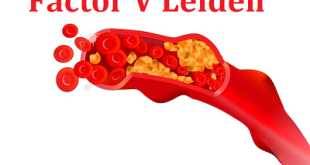What is Fabry Disease?
Fabry Disease (FD) is a rare genetic disorder caused by a defective gene (the GLA gene) in the body. In most cases, the defect in the gene causes a deficient quantity of the enzyme alpha-galactosidase A. This enzyme is necessary for the daily breakdown (metabolism) of a lipid (fatty substance) in the body called globotriaosylceramide abbreviated GL-3 or GB-3. When proper metabolism of this lipid and other similar lipids does not occur, GL-3 accumulates in the majority of cells throughout the body. The resulting progressive lipid accumulation leads to cell damage. The cell damage causes a wide range of mild to severe symptoms including potentially life-threatening consequences such as kidney failure, heart attacks and strokes often at a relatively early age. Fabry disease is a progressive, destructive and potentially life-threatening disease. Fabry disease can affect males and females of all ethnic and cultural backgrounds.
What are the types of Fabry disease?
The types of Fabry disease reflect a person’s age when symptoms first appear. Types include:
- Classic type: Symptoms of classic Fabry disease appear during childhood or the teenage years. One hallmark disease symptom — a painful burning sensation in the hands and feet — may be noticeable as early as age two. Symptoms get progressively worse over time.
- Late-onset/atypical type: People with late-onset Fabry disease don’t have symptoms until they’re in their 30s or older. The first indication of a problem may be kidney failure or heart disease.
Pathophysiology
Deficiency or absence of alpha-galactosidase A (α-GAL A) activity as a result of genetic mutation in the GLA gene (Xq21.3-q22) leads to lysosomal accumulation of glycosphingolipids, predominantly the cerebroside trihexosides. Diffuse, abnormal accumulation of glycosphingolipids occurs in all tissues, producing swelling and proliferation of endothelial cells. Abnormal reactivity of endothelial cells, with changes in blood flow in the brain and in peripheral vessels, has been documented on magnetic resonance imaging (MRI), positron emission tomography (PET) scanning, transcranial Doppler imaging (TCD), and plethysmography.
Disturbances in intraluminal pressure and angioarchitecture are thought to lead to dilatation, angiectasia, and dolichoectasia. The vertebrobasilar arteries appear particularly susceptible to dilatational arteriopathy. Small penetrating arteries frequently become narrowed and occluded. Cerebral infarcts result from direct vascular occlusion or stretching and from the distension of branches of the dolichoectatic parent vessels.
Decreased levels of thrombomodulin (TM) and increased plasminogen activator inhibitor (PAI) have been found in Fabry disease patients, thus suggesting that a prothrombotic state may be one cause of stroke in these patients.
How is Fabry disease inherited?
As the disease is X-linked, an affected male will pass his altered gene to all of his daughters, but none of his sons. An affected female will have a 50% chance of passing the altered gene to any child she has, whether they are male or female.
Historically, females were always said to be carriers of the defective gene and not clinically affected by Fabry disease, but that understanding has now very much been revised and it is now well accepted that women are also impacted by FD.
It’s a somewhat different clinical picture in that females are clearly affected by Fabry disease, but in a much more variable clinical presentation than males. They’re affected later than males and, fortunately, usually somewhat more mildly.
Females can, of course, also just be carriers and not be currently affected or have any clinical symptoms at all.
Causes and Risk Factors of Fabry disease
- Fabry disease is a genetic disorder. A genetic disorder is caused by a mutation, or change, in a part of a person’s DNA.
- In FD, the defective gene is on the X-chromosome, which is one of two sex chromosomes.
- Sex chromosomes determine a person’s gender at birth. Everyone inherits one sex chromosome from each parent. Mothers pass on only X chromosomes while fathers can pass on either an X or a Y chromosome.
- The chromosome passed on by the father then determines the sex of the offspring: females have two X chromosomes (XX), and males have one X chromosome and one Y chromosome (XY).
- FD affects mostly males, who receive one X chromosome with the abnormal gene.
- Females with Fabry disease also receive one X chromosome with the defective gene, however; since females have two X chromosomes, the normal X chromosome can offer some protection against developing the disorder.
- FD is caused by a genetic mutation resulting in a deficiency of an enzyme called alpha-galactosidase A (a-Gal A). The genetic defect causes the body to not make enough of this enzyme leading to a buildup of a type of fat called globotriaosylceramide (Gb3, or GL-3) in the body cause the symptoms of Fabry disease.
- Fabry disease is the result of what is called an X-linked inheritance, that is, the disease is caused by a defect on the X chromosome. X-linked genetic mutations tend to occur mostly in males and rarely in females.
- If a mother is carrying the defective gene for Fabry disease, both male and female children have a 50% chance of inheriting it from their mother. If the father is carrying the Fabry gene, the female children will inherit the defective gene because the father passes along an X chromosome to them, but the male children, who get a Y chromosome, will not.
- Females who inherit a defective X chromosome are called carriers and they may pass the genetic mutation on to their male children.
What are the symptoms of Fabry disease?
It is difficult to know if you have Fabry disease by looking at symptoms alone. Some of them you can see and feel, while some are silent. Also, symptoms can vary from person to person, even within families; some people may have only one symptom while others from the same family may have many of them. Fabry disease symptoms can range from mild to severe and can be different depending on your age. Sometimes, people do not even know they have it until they have serious health problems such as stroke, heart attack, or kidney failure.
Symptoms of Fabry disease can include:
- Kidney problems (protein in the urine, kidney disease)
- Feeling tired or weak
- Not sweating enough
- Skin lesions (spots on the skin)
- Abnormal pattern of lines on your cornea (the outer layer of the eye)
- Frequent fevers
- Being sensitive to hot and cold temperatures
- Stomach problems (pain after eating, diarrhea, constipation, nausea, vomiting, abdominal cramping)
- Heart problems (high blood pressure, irregular heartbeat, heart failure)
- Nervous system problems (vertigo, feeling weak, dizzy, numb, hearing loss, ringing in your ears)
- Depression and anxiety
One of the most common symptoms of Fabry disease is pain, tingling, or burning in the hands and feet. “Fabry crises” are periods of intense, burning pain that usually start in the hands and feet, and spread to other parts of the body. Fabry crises can last anywhere from a few minutes to a few days. The pain is usually caused by changes in weather, hot temperatures, stress, exercise and fatigue. Pain may also be worse when you have a fever.
What are the complications of Fabry disease?
The three most serious complications of Fabry disease are kidney disease, cardiac disease, and cerebrovascular disease.
- Kidney disease ranges from isolated proteinuria to end-stage renal failure.
- The cardiac disease seen in conjunction with Fabry disease includes left ventricular hypertrophy, heart failure, coronary artery disease, and arrhythmias.
- Cerebrovascular disease includes transient ischaemic attacks and ischaemic strokes.
How is Fabry disease diagnosed?
Your healthcare provider may order tests to diagnose Fabry disease, including:
- Enzyme assay: This test measures alpha-GAL enzymes in blood. Measurements of 1% or lower indicate disease. This test is most reliable for males and should not be used in females.
- Genetic: Because females with Fabry disease can have normal levels of alpha-GAL enzymes, providers use genetic testing (DNA sequencing) to identify the GLA gene mutation.
- Newborn screenings: Some states test newborns for Fabry disease and other lysosomal storage disorders. The enzyme test is included as part of routine newborn screenings.
- Biopsy: Biopsy from the heart is generally not required in people with heart problems associated with Fabry disease. However, this might sometimes be done when there are problems with the left ventricle of the heart and the diagnosis is unknown. In these cases, pathologists would look for signs of glycosphingolipid deposition on the cellular level. In some cases, other tissues may be biopsied, such as the skin or kidneys. In very rare cases, Fabry disease has been diagnosed incidentally when doctors have conducted biopsies looking for causes of organ failure (most commonly kidney failure).
Fabry disease treatment options
FD can cause a wide variety of symptoms. If you have FD, you’ll probably see specialists for some of these symptoms. In general, treatment will aim at managing symptoms, relieving pain, and preventing further damage.
Once you’ve been diagnosed with FD, it’s important to regularly see your doctor to monitor your symptoms. People with FD are advised not to smoke.
Here are some FD treatment options:
Enzyme-replacement therapy (ERT)
ERT is now a first-line treatment recommended for all people with FD. Agalsidase beta (Fabrazyme) has been used since 2003, when it was approved by the U.S. Food and Drug Administration. It’s given intravenously, or through an IV.
Pain management
Pain management can involve avoiding activities that might bring on symptoms, such as strenuous exercise or temperature changes. Your doctor may also prescribe medications such as diphenylhydantoin (Dilantin) or carbamazapine (Tegretol). These are taken daily for pain reduction and prevention of FD crises.
For your kidney
A low-protein, low-sodium diet may help if you have a mildly reduced kidney function. If your kidney function gets worse, you may need kidney dialysis. In dialysis, a machine is used to filter your blood three times a week or more, depending on what type of dialysis you’re on and how much you need. A kidney transplant may also be necessary.
As-needed treatments
Heart problems will be treated as they are for people without FD. Your doctor may prescribe medications to manage the condition. Your doctor may also prescribe treatments to reduce the risk of stroke. For stomach problems, your doctor may prescribe medication or a special diet.
How can I prevent Fabry disease?
Fabry disease is inherited. If you carry the mutated gene that causes Fabry disease, talk to a genetic counselor. This specialist can explain the chances of passing the gene to your children and discuss options. For instance, a process called preimplantation genetic diagnosis (PGD) identifies embryos that don’t carry the mutated gene. Your doctor implants healthy embryos during in vitro fertilization (IVF). PGD ensures your child won’t have the mutated gene or get Fabry disease.
 Diseases Treatments Dictionary This is complete solution to read all diseases treatments Which covers Prevention, Causes, Symptoms, Medical Terms, Drugs, Prescription, Natural Remedies with cures and Treatments. Most of the common diseases were listed in names, split with categories.
Diseases Treatments Dictionary This is complete solution to read all diseases treatments Which covers Prevention, Causes, Symptoms, Medical Terms, Drugs, Prescription, Natural Remedies with cures and Treatments. Most of the common diseases were listed in names, split with categories.







